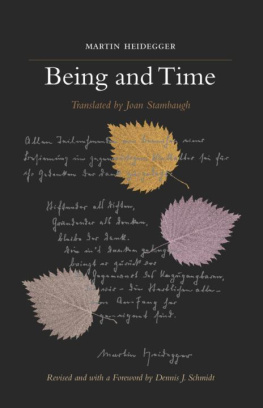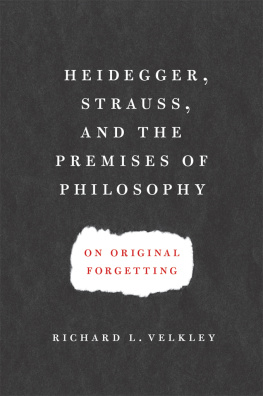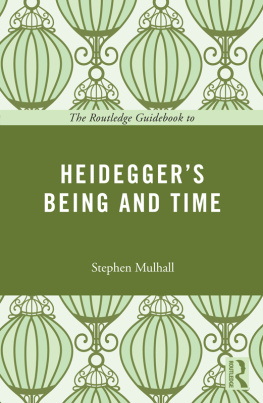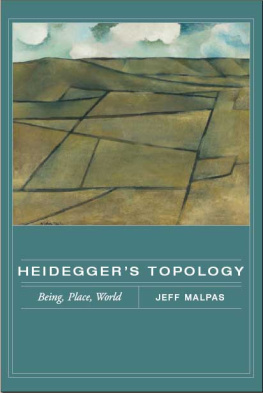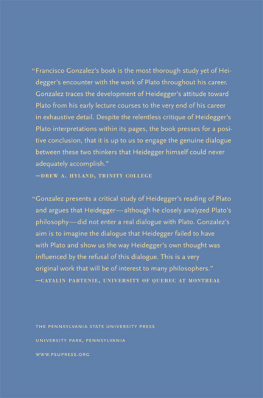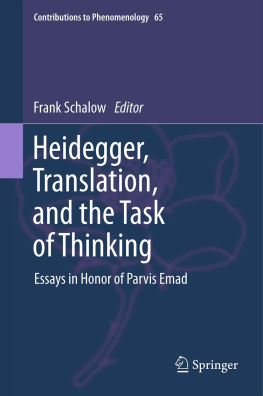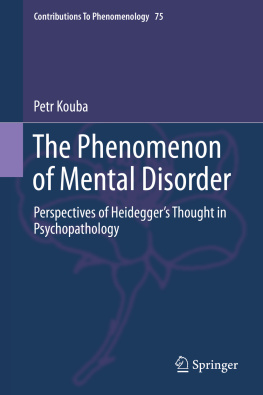


Dennis J. Schmidt, editor

MARTIN HEIDEGGER
Translated by Joan Stambaugh
Revised and with a Foreword by Dennis J. Schmidt

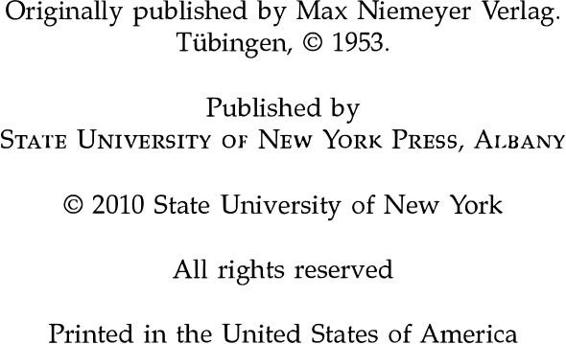
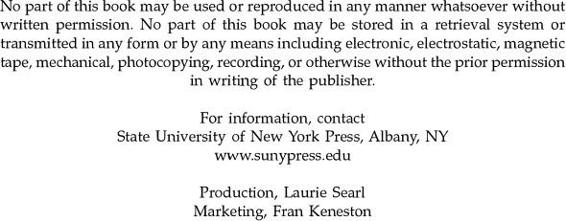
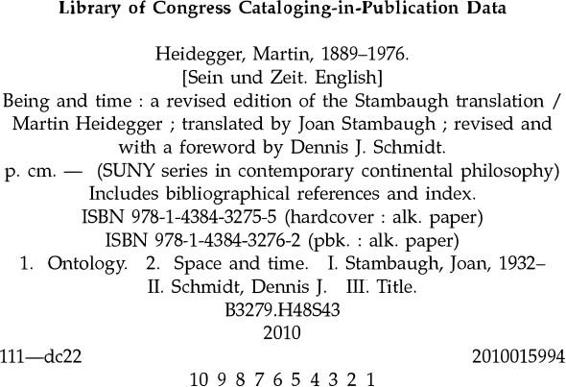

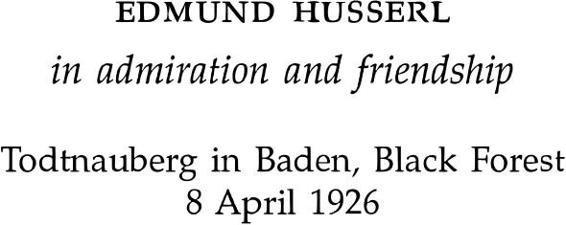

xv
xxiii
xxvii
xxix
INTRODUCTION
The Exposition of the Question of the Meaning of Being
Chapter One
The Necessity, Structure, and Priority of the Question of Being
Chapter Two
The Double Task in Working Out the Question of Being: The Method of the Investigation and Its Outline
27 30 32
PART ONE
The Interpretation of Dasein in Terms of Temporality and the Explication of Time as the Transcendental Horizon of the Question of Being
DIVISION ONE
The Preparatory Fundamental Analysis of Dasein
Chapter One
The Exposition of the Task of a Preparatory Analysis of Dasein
Chapter Two
Being-in-the-World in General as the Fundamental Constitution of Dasein
Chapter Three
The Worldliness of the World
668799
Chapter Four
Being-in-the-World as Being-with and Being a The "They"
Chapter Five
Being-in as Such
130161
Chapter Six
Care as the Being of Dasein
194 201 203206 210 217
DIVISION TWO
Dasein and Temporality
Chapter One
The Possible Being-a-Whole of Dasein and Being-toward-Death
Chapter Two
The Attestation of Dasein of an Authentic Potentiality-of-Being and Resoluteness
Chapter Three
The Authentic Potentiality-for-Being-a-Whole of Dasein, and Temporality as the Ontological Meaning of Care
Chapter Four
Temporality and Everydayness
321 324 330 333335340 347
Chapter Five
Temporality and Historicity
Chapter Six
Temporality and Within-Timeness as the Origin of the Vulgar Concept of Time
407 411

Published in the Spring of 1927, Being and Time was immediately recognized as an original and groundbreaking philosophical work. Reviewers compared it to an "electric shock" and a "lightning strike," and there was praise for the "philosophical brilliance" and "genius" of its young author, Martin Heidegger (he was only thirty-seven years old). Being and Time, and Heidegger, quickly became the focus of debates and controversy, as well as an inspiration for new impulses in thinking. Indeed, the publication of Being and Time was an intellectual event of such consequence that it seems right to describe it with a comment Goethe made in another context: "from here and today a new epoch of world history sets forth."
Prior to the publication of Being and Time Heidegger had achieved some fame on the basis of his lecture courses at the University of Marburg. The courses were challenging and stimulating, and it is no accident that many of his students during these years would become original thinkers in their own right. Hannah Arendt later spoke of "the rumor of a hidden king" circulating among university students in Germany. Hans-Georg Gadamer described Heidegger's classes as "an elemental event" in which "the boldness and radicality of [Heidegger's] questioning took one's breath away." Among students at least, it was clear that during his years at Marburg (1923-1928) Heidegger was laying the groundwork for a genuine philosophical revolution. But until the publication of Being and Time, that revolution remained only a rumor, since Heidegger had not published anything for a decade.
Despite his renown as a teacher, this absence of publications placed enormous pressures upon Heidegger to finally bring into print the ideas that he had been developing in his lecture courses. The reason for this is clear: in 1925 Heidegger was passed over by the Ministry of Education for a promotion to Paul Natorp's chair in philosophy at Marburg due to his lack of publications. Faced with this rejection, Heidegger worked intensely over the next year to finish the project of Being and Time until he was finally able to present "a virtually complete manuscript" to his teacher, Edmund Husserl, on Husserl's sixty-seventh birthday (April 8, 1926). Later that same year, Heidegger was again nominated for Natorp's chair, and this time he submitted the galley proofs of Being and Time in support of his nomination. The Ministry of Education's response was to reject Heidegger's nomination yet again, returning the proofs of Being and Time with the comment "insufficient." After Being and Time was published a few months later, its reception made it abundantly clear that this genuinely new philosophical voice and viewpoint was destined to have a profound impact upon philosophy, and that Heidegger had indeed opened up a new path for thinking. In 1928 Husserl retired from teaching at the University of Freiburg and Heidegger was offered Husserl's chair; although Heidegger eventually received an offer from Marburg, he accepted the chance to move to Freiburg as Husserl's successor instead.
One consequence of this pressure to publish was that Heidegger decided to publish Being and Time in installments rather than wait until the entire text was finished as he had outlined it. The conception of the fundamental ontological project undertaken in Being and Time was, however, fully articulated from the outset: in 8 of the Introduction, Heidegger outlines the plan of Being and Time as divided into two parts, each with three divisions. The first installment of the text that Heidegger published in 1927 consisted only of the first two divisions of the first part; two-thirds of the planned text-the last division of the first part and the entire second part of the projected text-were still to be written. Initially, Heidegger planned on completing the project of Being and Time as he had originally outlined it, but by 1929 or 1930, he had abandoned that plan. The text that we now have, and that stands as the complete text of Being and Time, is thus the "incomplete" version that was published in the spring of 1927. Heidegger announces this in his "Author's Preface to the Seventh German Edition" (1953) when he writes: "The designation 'First Half,' which previous editions bore, has been deleted. After a quarter century, the second half could no longer be added without the first being presented anew. Nonetheless, its path still remains a necessary one even today if the question of being is to move our Dasein" (H xxvii).
Next page
